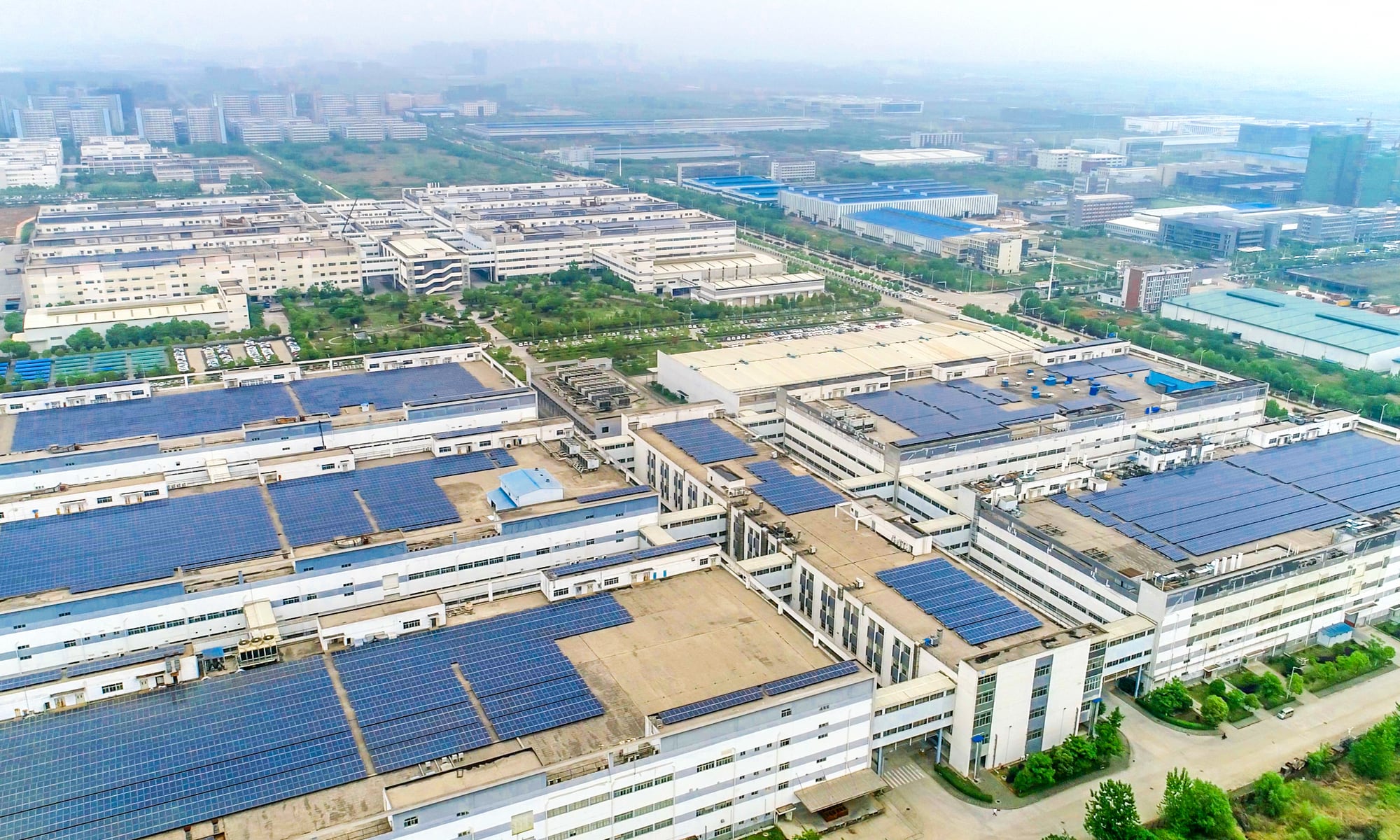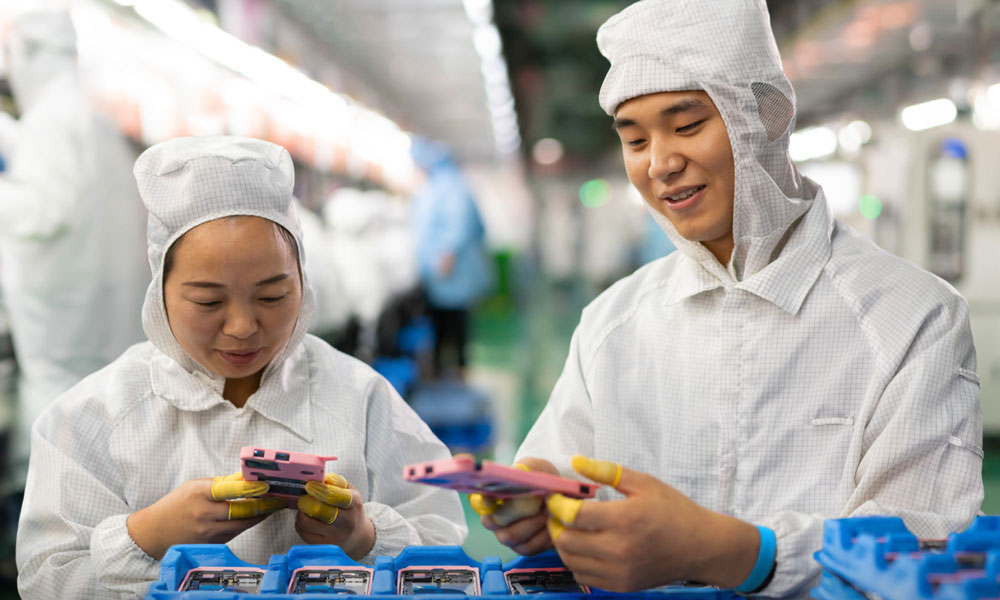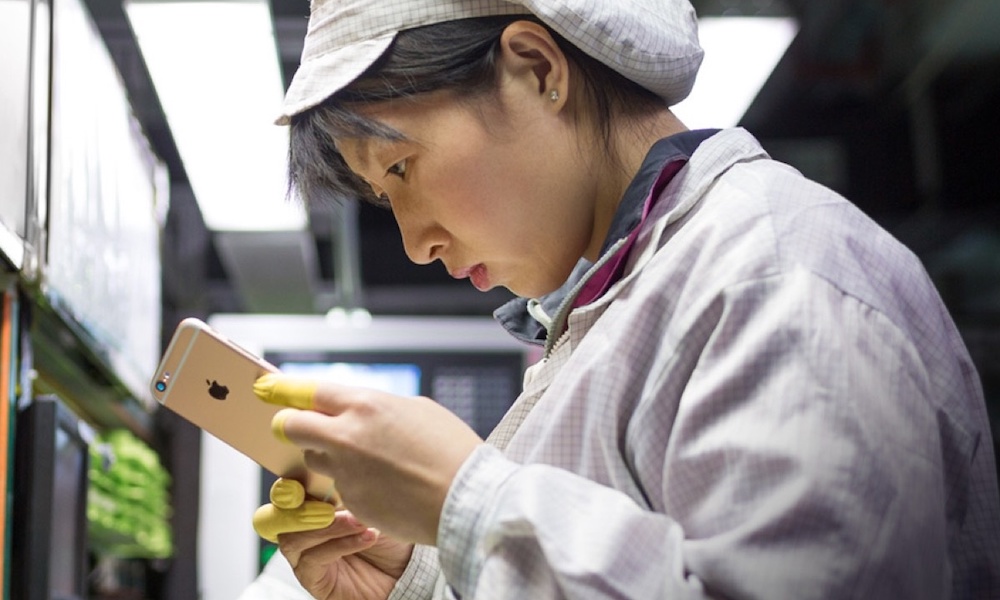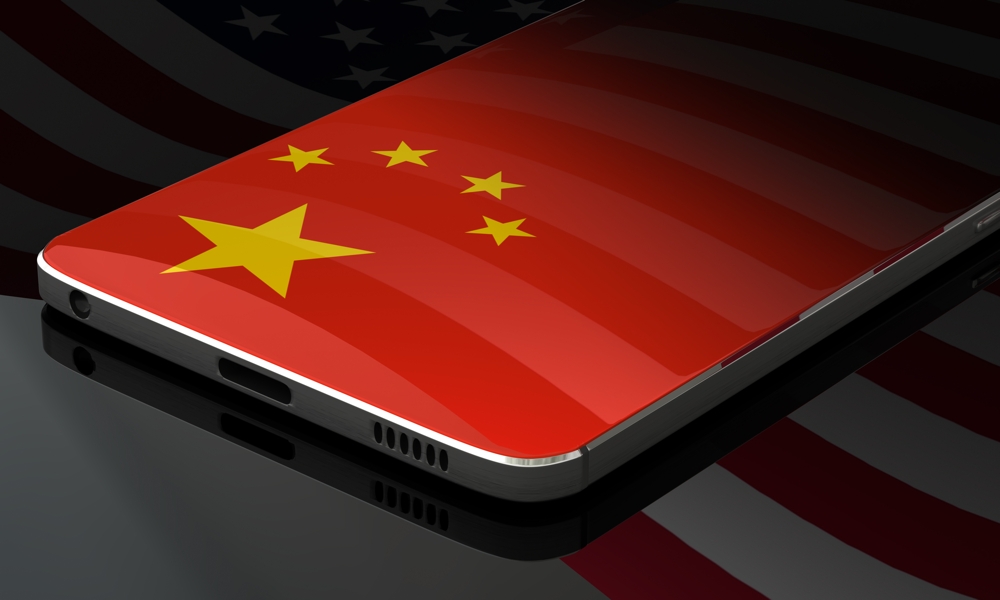Here’s Why Building iPhones in the US is a Pipe Dream
 Foxconn plant in Wuhan
Foxconn plant in Wuhan
Toggle Dark Mode
One of the fundamental problems with the Trump administration’s stated ambitions of bringing manufacturing jobs back to the US is the sheer scale of the global supply chain. Large industries that build complex products can’t pivot overnight, and many couldn’t begin to pull this off within the next four years even if they wanted to.
Perhaps nowhere is this more evident than with Apple’s iPhone supply chain. While President Trump has said he “absolutely” believes it’s possible for iPhones to be made in the US, there’s a vast gulf between what’s possible and what’s realistic.
A few weeks ago, US Commerce Secretary Howard Lutnick infamously said that the “army of millions and millions of people screwing in little, little screws to make iPhones, that kind of thing is going to come to America.” Such a notion is a massive oversimplification of what goes into building an iPhone or even the labor market. Are Americans going to be lining up to do the mundane work of “screwing in little, little screws” on an iPhone production line?
Even if that’s true, the situation is far more complex. The Financial Times took a deep dive into precisely what’s involved in putting an iPhone together, and there are more moving pieces than most folks realize.
As the report notes, Motorola tried this once. In 2013, it was determined to prove that manufacturing in the US could be done cost-effectively. It commissioned the first-ever American smartphone plant in Fort Worth, Texas, run by Flextronics, to begin assembling the Moto X. The initiative lasted a year before it realized it wasn’t economically sustainable.
The 2013 Moto X was a much simpler device than the 2024 iPhone 16. As the Financial Times explained, a modern iPhone consists of around 2,700 different parts, which come from 187 suppliers in 28 countries. China may be where most iPhones are ultimately assembled — around 85% — but the overall supply chain is truly a part of the global economy.
That already includes a few US suppliers. Although they collectively account for less than 5 percent of iPhone components, the Ceramic Shield glass is manufactured by Corning in Kentucky. Other US-made components include the Face ID sensors and some of the chips, which are being produced by 24 factories in 12 US states, although many of these are used in other Apple products, such as the iPad, Apple Watch, and Mac. For example, TSMC recently began fabricating A16 chips at its Arizona plant, which are used in the iPhone 15, iPhone 15 Plus, and iPad, but it’s also still running production lines for these same chips in Taiwan.
Many of the 187 suppliers used by Apple have multiple facilities spanning multiple countries, and only 30 have no presence in China. There’s so much overlap, in fact, that China hosts 284 of the 759 manufacturing facilities that produce components for Apple. Japan and the US come in second and third, at 108 and 62, respectively, followed by South Korea (54), Taiwan (48), and then Thailand and Vietnam, with 38 facilities each.
Despite India being another major location for iPhone assembly, only 14 of Apple’s suppliers have manufacturing facilities in that country. This means that most components that go to India’s iPhone plants must be imported from elsewhere. India’s government has previously tried moves similar to those of the Trump administration, using import duties on parts to encourage Apple’s suppliers to open new plants in that country. This hasn’t had much of an impact on Apple’s supply chain.
Geography and Skill
The situation in China goes well beyond lower labor costs. While that’s still an advantage, it’s no longer the primary consideration. Apple CEO Tim Cook made that clear in 2017 when he said that “China stopped being the low labor cost country many years ago,” noting that Apple does business there today “because of the skill, the quantity of skill in one location, and the type of skill it is.”
Motorola discovered this in 2013 when it found that not only were labor costs “significantly higher” in the US, but in some cases, the necessary skills were entirely unavailable. For example, Motorola required “tens of thousands” of mechanical tooling engineers, according to then senior VP Mark Randall, who told the Financial Times that the US simply didn’t have enough engineers to meet Motorola’s needs.
The Financial Times goes one step further, adding that not only is it about “specific expertise for individual components,” but the fact that it’s concentrated “in almost a dozen countries in Asia” and anchored around “clusters of suppliers in China.”
It’s also hard to fathom the scale of iPhone manufacturing. “Apple ships more than 230mn iPhones each year — the equivalent of producing 438 every minute,” the article notes. That requires a scale of production that takes years to shift to a new region, and part of the economy of iPhone manufacturing is based on keeping suppliers close together.
“When you put an ocean between the customer, in this case, Apple, and the component supplier, there is a disadvantage,” Andy Tsay, professor of information systems at Santa Clara University’s Leavey Business School, told the Financial Times. Moving components around quickly becomes much more difficult, resulting in delays where downstream facilities may find themselves running at lower than peak capacity.
It’s also not just about Apple building plants in the US. The iPhone maker may wield a lot of influence over its suppliers, but that doesn’t mean it’s enough to convince them to set up shop in America. Many of these companies also supply components for other smartphone makers, including China’s Huawei and Xiaomi.
Shifting production to the US would therefore require years if not decades of coordinated investment in automation, tools, infrastructure and training. Incentivising foreign component manufacturers to build facilities in the US would also be a challenge.
The Financial Times
There are key iPhone components that can only come from one supplier. For example, all of Apple’s A-series and M-series chips are made by TSMC. While that company has made some inroads into the US, such as the new plant in Arizona, it would still take years to build a new chip fabrication line that would be able to handle the A18 and M4 chips that use a newer 3nm process, by which time those chips would be old news. TSMC is already preparing 2nm fabrication lines in Arizona, but it’s unclear whether these will be ready for the iPhone 18. Even if they are, analysts have suggested this will lead to higher iPhone costs.
An ‘Army’ of CNC Machines
Foxconn’s “iPhone city” in Zhengzhou produces about half of the world’s iPhones and employs 350,000 workers during peak production seasons. However, it’s not just about the availability of affordable labor.
Something as seemingly basic as the metal frame that houses a modern iPhone relies on equipment that’s not available at the necessary scale in the United States. Remember, we’re talking about producing over 400 iPhones per minute. That requires an “army” of high-precision computer numerical control (CNC) machines to cut and shape the iPhone frame, which Apple’s suppliers have been amassing for years.
“If Apple were to onshore iPhone production, there wouldn’t be enough CNC machines they can purchase to meet the scale of the China ecosystem,” Wayne Lam, an analyst at TechInsights, told the Financial Times.
One thing Commerce Secretary Lutnick is right about is that there actually are humans screwing in little screws. Each iPhone has 74 tiny screws that are primarily made in China and India, and they’re all fixed in place by hand. Still, the manufacturing of these screws is complex, as they’re made from different materials and even have different styles of heads, from standard Philips to pentalobe.
Due to the way the iPhone is built, including avoiding glue to attach the frame, it’s more cost-effective for Foxconn to “hire people to do the screwing than to invest in robotic solutions.”
It’s unclear if Lutnick was implying that Apple would create similar manufacturing jobs in a US plant, as he’s also suggested automation would create more jobs for robotics engineers. That sounds more reasonable, except that Apple and Foxconn would have to develop the technology to automate these processes. That’s another thing that isn’t going to happen overnight.
China Isn’t Letting Go Easily
Lastly, even if Apple was 100% committed to shifting iPhone manufacturing to the US, it would face an uphill battle with Beijing, which has already resisted Apple’s attempts to move some of its production to India.
Apple is a big part of China’s manufacturing economy, and Beijing isn’t going to let it go without a fight. Apple can’t spin up iPhone manufacturing from scratch; it needs its Chinese suppliers, such as Foxconn, to move talent and equipment to other countries, and the Chinese government has been making that process as difficult as it possibly can, slowing down visa applications for engineers and technicians who need to install and service the machinery, and dragging its feet on export approvals to ship manufacturing equipment out of the country.
If Chinese officials are already stonewalling Apple on moving to India, they’re likely to be even more intransigent on equipment and suppliers moving to the US — a country that’s a much bigger rival even when there isn’t a heated trade war going on.
Apple has long aimed to diversify its supply chain, so moving some production to India and other countries would be inevitable even without the current tariff uncertainty. However, when it comes to shifting manufacturing to the US, it makes much more sense for Apple to sit back and wait, as the time it would take to make it happen on the scale that President Trump wants is almost sure to outlive his administration.











